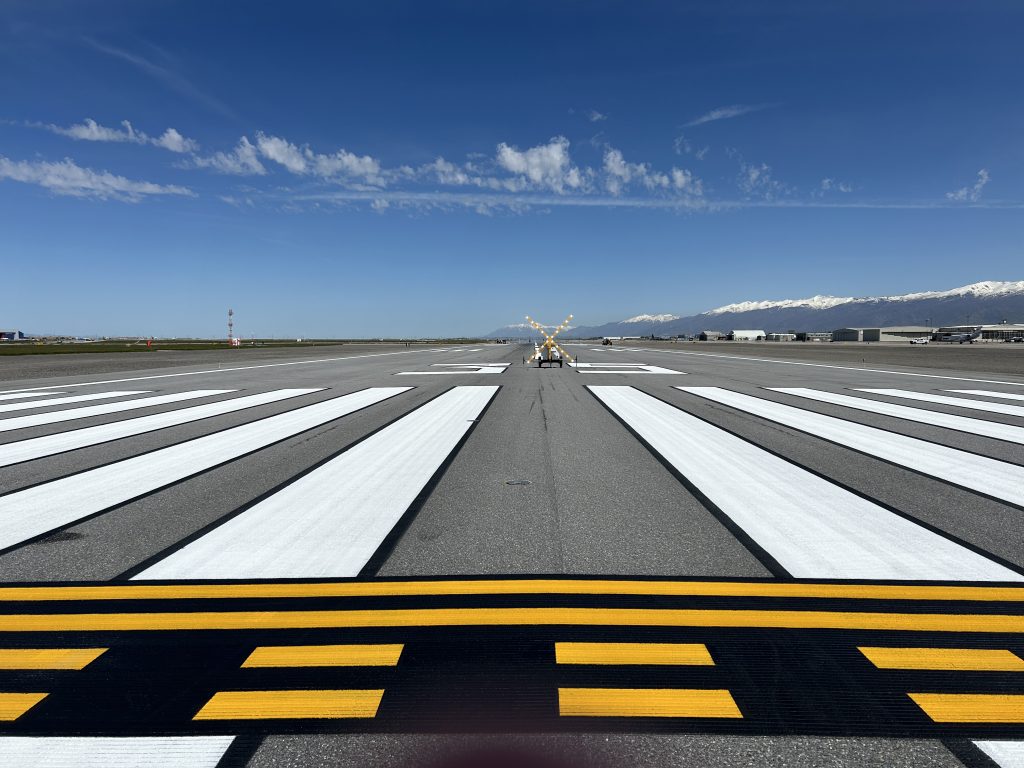A Monumental Task | Airport Spring Maintenance
The term “Spring Cleaning” evokes a variety of responses- motivation to declutter the closets, dread toward shaking out the rugs after a long winter, or excitement at slapping on a new coat of paint. At the Salt Lake City International Airport (SLC), “Spring Cleaning” is really just an extension of everyday maintenance work with one key difference- all runways are closed, one by one, over the course of April and May for intensive cleaning and painting.
“Closing the runways- especially the west and center runway- is a tricky needle to thread,” said Dave Tingey, airfield maintenance operations manager. “Shutting the runways down is an important part of airfield maintenance and we have to do our work quickly to avoid any interruptions in service.”
132 Acres of Runway
Picture a football field. Now multiply that by 100. The total runway acreage at the SLC is 132.56- roughly the size of 100 football fields! That is a lot of pavement to maintain, which is why each runway needs to be maintained individually. Beginning on a Friday evening, maintenance crews work 24 hours a day to finish the maintenance on each closed runway by the following Tuesday. That leaves the remaining two runways to handle all air traffic during the closure.
Spring runway maintenance mainly involves rubber removal, paint cleaning/removal, and repainting. First, the Airport Department of Maintenance team uses a high-pressure water blaster to remove rubber. Spraying water at 33,000 PSI (a standard home power washer is 3000 PSI), the water blaster liquifies built up rubber and then sucks it up to be properly disposed.

“Removing built up rubber is critical for runway safety,” says Tingey. “Too much rubber buildup can cause friction issues which could prevent aircraft from braking safely.”
Paint, Noxious Weeds, and Ruts
After the rubber build-up is removed, crews begin cleaning the paint and removing it when necessary. Paint is cleaned and removed with the same high-pressure rubber removal equipment in addition to specialized grinding equipment. Once cleaned, the runway is repainted with a special reflective paint- about 850 gallons in total. The secret to the paint’s reflectivity? Thousands of tiny glass beads mixed into each batch. This reflectivity is critical for visibility, ensuring that aircraft can land safely at SLC any time of the day.

During the runway shutdowns, the maintenance crews are also busy at work on the safety areas- the strips of land between taxiways and runways that planes use in case of an emergency. These areas need to be sprayed for noxious weeds. Plus, ruts need to be filled and the ground leveled in case a plane needs to use the area.
Once the critical maintenance is finished and inspected, the runway is ready to reopen. This whole process is repeated again in the Fall. It’s a monumental task to maintain SLC’s runways with excellence and expediency. And the 104-person Department of Maintenance does it with great care and pride.


